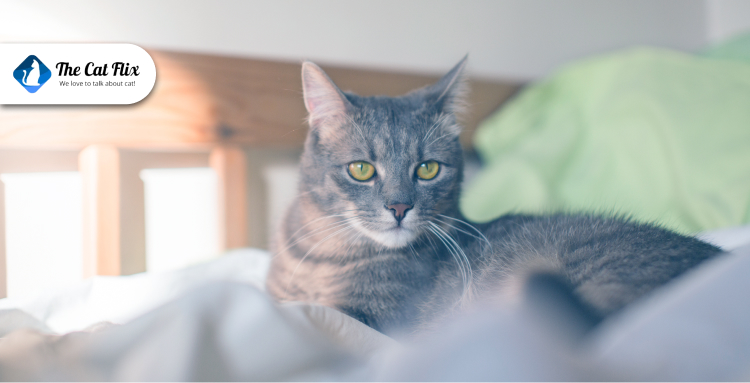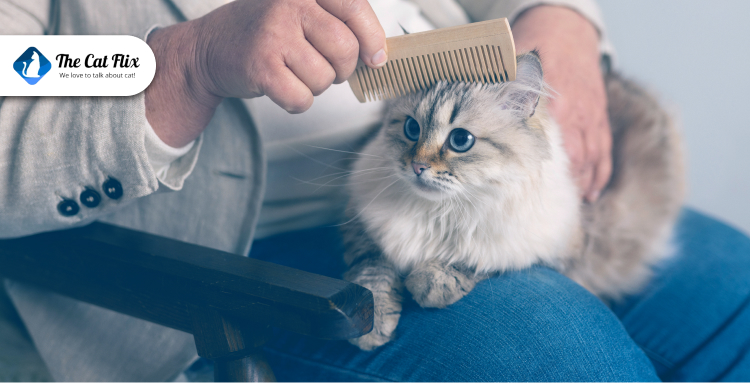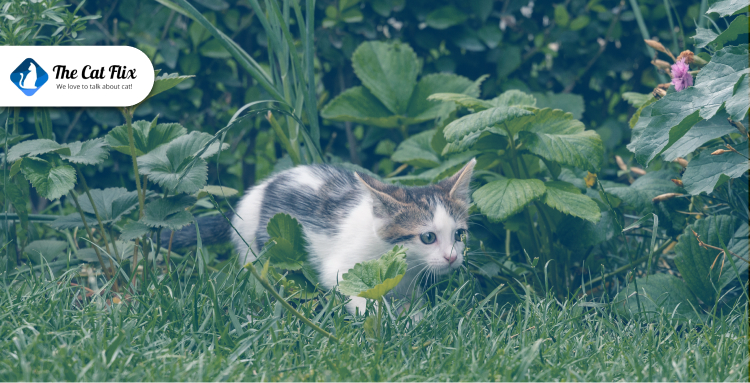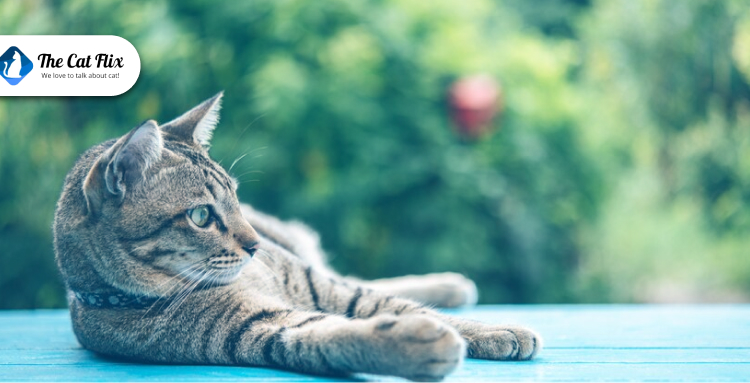Phew, it’s hot out there! We all know how uncomfortable a heatwave can be. But have you ever stopped to think about how your cat is coping? They’re covered in fur, after all! Indeed, cats are naturally drawn to warmth. But when temperatures rise, they can get seriously overheated, and it’s not just about being a little uncomfortable. Unlike us, cats don’t sweat to cool down. They rely on us to help them beat the heat.
So, how do you keep your cat cool when the temperatures climb? Let’s dive into some simple but effective ways to protect your cat from the heat and make sure they stay happy and healthy all summer long.
Heat Exhaustion Vs. Heat Stroke
Let’s talk about heat exhaustion and heatstroke in cats. These are serious conditions, especially when the weather gets warm. Heat exhaustion is like a warning sign. It can turn into heatstroke, which is much more dangerous.
Think of it this way: heat exhaustion is the first stage. A cat gets too hot and tries to cool down. You might see them acting restless, looking for a cool place. They might even groom themselves more than usual and show other symptoms. These are all ways their body tries to lower its temperature. If a cat doesn’t cool down, heat exhaustion can turn into heatstroke. This happens when their body temperature gets really high—105°F or more. This is an emergency. If you think your cat has heatstroke, you need to act fast. It’s important to know that it doesn’t have to be super hot outside for a cat to get heatstroke. Things like too much exercise in warm weather or being stuck in a hot, humid place with poor airflow can cause it.
How Do I Know My Cat Is Overheating?
Cats are experts at hiding discomfort, so it’s important to know the signs of overheating. Here’s what to watch for.
- Panting
- Restlessness
- Seeking shade or water
- Drooling
- Red gums or tongue
- Faster heart rate
- Vomiting or diarrhea
Early signs are often subtle. During this stage, they might seek cool places like tile floors or shady spots. They might pant, drool, or have sweaty paws. Spotting these signs and acting quickly can prevent heatstroke.
If things get worse, more serious signs can appear. These include tiredness, confusion, weakness, or even collapsing. In severe cases, they might have seizures. Heatstroke is more common in certain situations. Outdoor cats are at risk, especially on hot or humid days, or if they lack shade and water. Indoor cats can also overheat if they suddenly go outside into hot weather or if there’s no air conditioning.
Tips for Keeping Cats Cool in Summer

Cats may love to bask in the sun, but summer’s heat can be dangerous if they’re not properly cared for. Here’s a guide to help you keep your cat safe and cool during those hot days.
1. Keep Them Hydrated
Hydration is key in summer. Cats are finicky about drinking water, so make it easier for them.
- Separate the water bowl: Move it away from food and litter areas; cats don’t like these too close together.
- Try different bowls: Experiment with materials like ceramic or metal and offer large bowls filled to the brim.
- Offer running water: Some cats prefer a water fountain or even a running tap.
- Place multiple water bowls: Keep fresh water accessible indoors and outdoors.
- Rainwater appeal: Collect rainwater in a clean bowl; cats often prefer its taste over tap water.
2. Create Icy Treats and Fun
Turn cooling into a playful experience.
- Ice lollies for cats: Freeze tuna water or low-salt chicken broth in an ice mould for a tasty, cool snack.
- Play with ice cubes: Scatter them on a hard floor and watch your cat bat them around while cooling their paws.
3. Provide Shady Spots
Cats instinctively seek shade when it’s hot.
- Natural shade: Use trees and bushes to create cool spots in your yard.
- Portable solutions: Set up sun sails or move their bed to a shaded area.
- DIY hideouts: Add an ice pack, toys, and water to encourage them to relax away from the sun.
4. Cooling Mats and Wet Towels
Help them chill with simple tricks.
- Cooling mats: Buy a pet cooling mat or wrap ice packs in a towel and place it in their favorite spot.
- Wet towels: If your cat dislikes water, dab their fur gently with a cool, damp cloth or wet your hands and stroke them.
5. Groom Regularly

Loose fur traps heat, so brushing your cat daily keeps them comfortable. Long-haired cats may benefit from a professional trim. You might also notice your cat grooming more—it’s their way of cooling down, as saliva evaporates from their fur.
6. Adjust Indoor Comfort
If your cat is an indoor pet, make sure your home stays cool and comfortable.
- Block sunlight: Close curtains or blinds to prevent rooms from heating up.
- Use fans safely: Set up oscillating fans, run the air conditioning (if possible), or open windows (with secure screens) for ventilation.
- Cool floors: Remove rugs so your cat can stretch out on cool tiles.
More for you: How to Keep Indoor Cats Entertained
7. Keep Them Indoors When Necessary
During peak heat hours (12 PM – 2 PM), keep your cat indoors. Hot pavement can burn their paws, and the midday sun poses risks of dehydration and heatstroke.
8. Be Cautious With Windows
Open windows are risky for curious cats. Install screens or safety nets to prevent falls while allowing fresh air in.
9. Watch for Hidden Hazards
Before closing sheds, garages, or greenhouses, check for sneaky cats that might have snuck in. These spaces can trap heat and cause heatstroke.
10. Protect From Sunburn
Light-colored cats and those with thin fur are at risk of sunburn, especially on their ears and noses.
- Pet-safe sunscreen: Apply to vulnerable areas after consulting your vet.
- Limit sun exposure: Keep your cat indoors during the strongest sunlight hours (11 AM – 3 PM).
Preventive Tips for Heat Stroke in Cats

Heatstroke can be life-threatening for cats, but the good news is that you can prevent it with some simple steps.
-
Keep Your Cat Indoors
This protects them from dangers like predators, parasites, and, of course, the heat. Avoid letting them out on a catio on hot or humid days.
-
Avoid Hot Surfaces
Pavement and other outdoor surfaces can heat up quickly and burn your cat’s paws. These hot surfaces can also make their body temperature rise faster. Keep walks and outdoor time to cooler parts of the day, like early morning or evening.
-
Never Leave Your Cat in a Parked Car
A parked car can become dangerously hot in minutes, even with the windows cracked. Never leave your cat unattended in a vehicle, no matter how quick you think your errand will be.
-
Be Cautious with Catio Time
While catios are great for giving your cat safe outdoor access, they can become dangerously hot on humid or sunny days. Skip the catio time during extreme heat to keep them safe.
-
Check for Hidden Dangers Indoors
Always check your clothes dryer before using it. Cats sometimes sneak inside. Keep the dryer closed when you’re not using it. Place a bag or purse by the cat carrier. This reminds you not to leave your cat in the car.
-
Plan for Emergencies
Install a Wi-Fi thermostat in your home. It can alert you if the power goes out or the temperature rises unexpectedly. This is especially helpful when you’re not home, so you can act quickly to protect your cat.
-
Keep Medications on Schedule
If your cat takes medications for conditions like seizures, ensure they never miss a dose. Heat and stress can increase the risk of episodes, making regular medication even more critical in warmer weather.
Frequently Asked Questions
At what temperature is it too hot for cats?
Anything above 100°F (38°C) is dangerous. Even though cats often enjoy warm places, they can still overheat.
Are heat waves painful for cats?
When a cat’s body temperature goes above 104°F, it is extremely dangerous. It triggers a massive inflammatory response throughout their body. This inflammation disrupts essential proteins and enzymes, putting the cat at risk of organ failure and even death.
How to cool off a panting cat fast?
If your cat is panting or showing other signs of heat distress, immediately immerse them in cool (not ice-cold) water, or at the very least, submerge their paws. This can lower their body temperature quickly.
Conclusion
Keeping your feline friend cool during the hot summer months is crucial for their health and well-being. By understanding the signs of overheating, taking preventive measures, and knowing how to cool them down quickly, you can ensure they stay safe and comfortable. Remember, heatstroke is a serious condition that can have life-threatening consequences. So vigilance and proactive care are essential. With a little extra attention and these helpful tips, you and your cat can enjoy a happy and healthy summer together. If you found these tips helpful, don’t forget to share this article with other cat lovers, comment below with your own tips.

